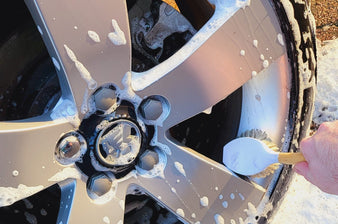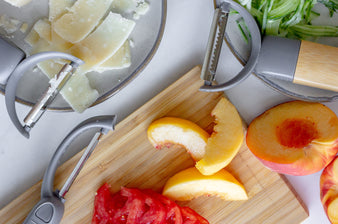Our 3 Rules to Green Cleaning
Now that you know what green cleaning is, you still have to start somewhere, right? And there are a lot of buzz words that go hand in hand with the green movement – sustainable, natural, eco-friendly, organic, non-toxic, clean, ethical, renewable – we could really go on, but we won’t. Instead, we’ll give you three rules to help you ignore all of that jargon and three steps to start yourself on a path to being green.
Rule 1 – Sustainability is key. Sustainable means that we can keep doing it without impacting the earth in a meaningful way. We can keep making the product, solution, what have you, and the earth will stay healthy. This is the highest form of green cleaning.
Rule 2 – There’s always a replacement. Sometimes we love a product, it works well, and we’ve been using it for ages, but it is bad for the planet. We promise, there is a better option out there. There is a whole new generation of businesses that are making products that are superior in function and design and also sustainable.
Rule 3 – You’re in it for the long haul. We’re constantly re-quoting the Zero Waste Chef Anne Marie Bonneau, who said it best, “we don’t need a handful of people doing zero waste perfectly, we need millions of people doing it imperfectly.”
With those rules in mind, let’s talk about the easiest steps to start you off.
Step 1 – Start small. Look at the simplest ways you can make changes in your home – common plastic items that are single-use or have short lifespans and solutions that are confounded with chemicals that have no real place in your home. For example, your plastic sponges can be switched to cellulose and you can swap your dishwasher detergent for the powder that comes in a cardboard box.
Step 2 – Remember the first two R’s first. You learned it in school, the three R’s: reduce, reuse, recycle. There’s a reason they are in that order and it’s not just because it sounds good. They are listed in order of importance. Reducing our consumption and waste is paramount with landfills overflowing and populations booming. Reusing things gives them new life and prevents them from being diverted elsewhere. Recycling should be your last option (before ordinary trash, of course) because recycling still requires massive amounts of energy and water.
Step 3 – Give yourself goals. As rule three pointed out, you’re in this for the long haul. This is the beginning of new lifelong habits in service of the planet, your family, and your fellow humans. Accomplishing goals and meeting milestones help to propel us along. Without these, we often fall off the wagon.
That’s it. You’re ready to begin.
Rule 1 – Sustainability is key. Sustainable means that we can keep doing it without impacting the earth in a meaningful way. We can keep making the product, solution, what have you, and the earth will stay healthy. This is the highest form of green cleaning.
Rule 2 – There’s always a replacement. Sometimes we love a product, it works well, and we’ve been using it for ages, but it is bad for the planet. We promise, there is a better option out there. There is a whole new generation of businesses that are making products that are superior in function and design and also sustainable.
Rule 3 – You’re in it for the long haul. We’re constantly re-quoting the Zero Waste Chef Anne Marie Bonneau, who said it best, “we don’t need a handful of people doing zero waste perfectly, we need millions of people doing it imperfectly.”
With those rules in mind, let’s talk about the easiest steps to start you off.
Step 1 – Start small. Look at the simplest ways you can make changes in your home – common plastic items that are single-use or have short lifespans and solutions that are confounded with chemicals that have no real place in your home. For example, your plastic sponges can be switched to cellulose and you can swap your dishwasher detergent for the powder that comes in a cardboard box.
Step 2 – Remember the first two R’s first. You learned it in school, the three R’s: reduce, reuse, recycle. There’s a reason they are in that order and it’s not just because it sounds good. They are listed in order of importance. Reducing our consumption and waste is paramount with landfills overflowing and populations booming. Reusing things gives them new life and prevents them from being diverted elsewhere. Recycling should be your last option (before ordinary trash, of course) because recycling still requires massive amounts of energy and water.
Step 3 – Give yourself goals. As rule three pointed out, you’re in this for the long haul. This is the beginning of new lifelong habits in service of the planet, your family, and your fellow humans. Accomplishing goals and meeting milestones help to propel us along. Without these, we often fall off the wagon.
That’s it. You’re ready to begin.




